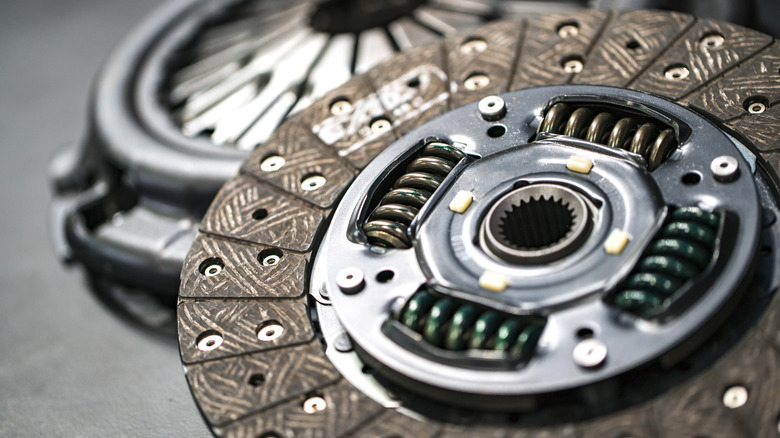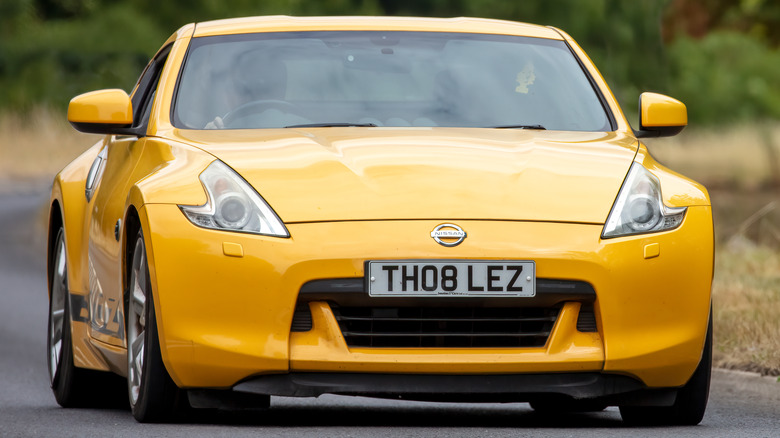
If you're trying to really maximize your performance around a racetrack, you may have heard that top-level drivers will "blip" the throttle when they downshift. While their left foot is handling the clutch pedal, their right foot is handling both the brake and the accelerator simultaneously. That is some serious dancing, and it takes a lot of practice to get just right. If you want to absolutely dominate a track, are you going to have to learn all that? Is it really necessary?
What these drivers are trying to do is smooth out the disruption caused by a downshift, which can jerk and unbalance the car. Both effects are really pretty minor, which is why you don't really need to worry about this effect when you're just driving around town. But in a race, when tenths of a second matter, "pretty minor" becomes pretty major. So to get rid of that and keep the car balanced, race drivers will try to rev match every time they go down a gear. Blipping the throttle, all that fancy footwork on the pedals, is how they accomplish that rev matching. Great! So ... what exactly does that mean?
 Witthaya Prasongsin/Getty Images
Witthaya Prasongsin/Getty Images
In a manual transmission car, the clutch disc on the gearbox is attached to the pressure plate on the engine. They spin together, a key link in the drivetrain. To change gears, you have to detach the clutch disc from the pressure plate — this is what's happening when you press the clutch pedal. Once you do that, you then actually shift using the gear stick, in this case down a gear.
Now that the car is in a different (lower) gear, the clutch disc will spin much faster than a moment ago. Release the clutch pedal, and the clutch disc re-engages with the engine's pressure plate, which has not yet changed spin speed. At the moment of engagement, therefore, the clutch disc is spinning much faster than the pressure plate, causing a moment's jerk and unbalance as the drivetrain sorts itself out again.
That moment of unbalance is bad for maximizing performance, and if you're really cornering at the limit, might even make the car spin out. So to prevent it from happening, you need to get your engine's pressure plate to spin faster, matching the revolutions of the clutch disc. In other words, rev matching. That means tapping the accelerator (blipping) as you're shifting. Your left foot is already busy with the clutch pedal, and since this is a downshift, you're also braking. Therefore, you're going to have to use your right foot to manage both the braking and the blipping.
 Sue Thatcher/Getty Images
Sue Thatcher/Getty Images
If that all sounds very complicated, you're in luck: These days, most manual transmission cars feature automatic rev matching, in which the car's computer simply does all this for you. Nissan debuted this system in 2009 with the 370Z, and since then, many other brands have followed suit. That means you can worry more about driving than footwork. Of course, if you truly want to feel like you have a direct connection with the machine without a microchip in the way, many of these cars will also let you turn the system off if you want.
And if you happen to be hitting the track with an automatic transmission car, none of this even applies anyway. Automatics don't use a clutch; instead, they have an entirely different device called a torque converter, which never disconnects from the engine, eliminating the issue altogether. Electric cars, meanwhile, simply go the extra mile and get rid of the need for gear shifting. Many only have one gear, meaning there's nothing to shift to in the first place, and even the ones that do have multiple gears are automatic.















Facebook Conversations